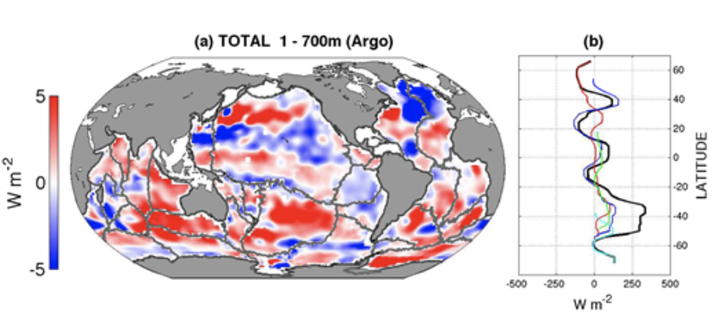Global and Full-Depth Ocean Temperature Trends during the Early Twenty-First Century from Argo and Repeat Hydrography

Abstract
The early twenty-first century’s warming trend of the full-depth global ocean is calculated by combining the analysis of Argo (top 2000 m) and repeat hydrography into a blended full-depth observing system. The surface-to-bottom temperature change over the last decade of sustained observation is equivalent to a heat uptake of 0.71 ± 0.09 W m−2 applied over the surface of Earth, 90% of it being found above 2000-m depth. The authors decompose the temperature trend pointwise into changes in isopycnal depth (heave) and temperature changes along an isopycnal (spiciness) to describe the mechanisms controlling the variability. The heave component dominates the global heat content increase, with the largest trends found in the Southern Hemisphere’s extratropics (0–2000 m) highlighting a volumetric increase of subtropical mode waters. Significant heave-related warming is also found in the deep North Atlantic and Southern Oceans (2000–4000 m), reflecting a potential decrease in deep water mass renewal rates. The spiciness component shows its strongest contribution at intermediate levels (700–2000 m), with striking localized warming signals in regions of intense vertical mixing (North Atlantic and Southern Oceans). Finally, the agreement between the independent Argo and repeat hydrography temperature changes at 2000 m provides an overall good confidence in the blended heat content evaluation on global and ocean scales but also highlights basin-scale discrepancies between the two independent estimates. Those mismatches are largest in those basins with the largest heave signature (Southern Ocean) and reflect both the temporal and spatial sparseness of the hydrography sampling.